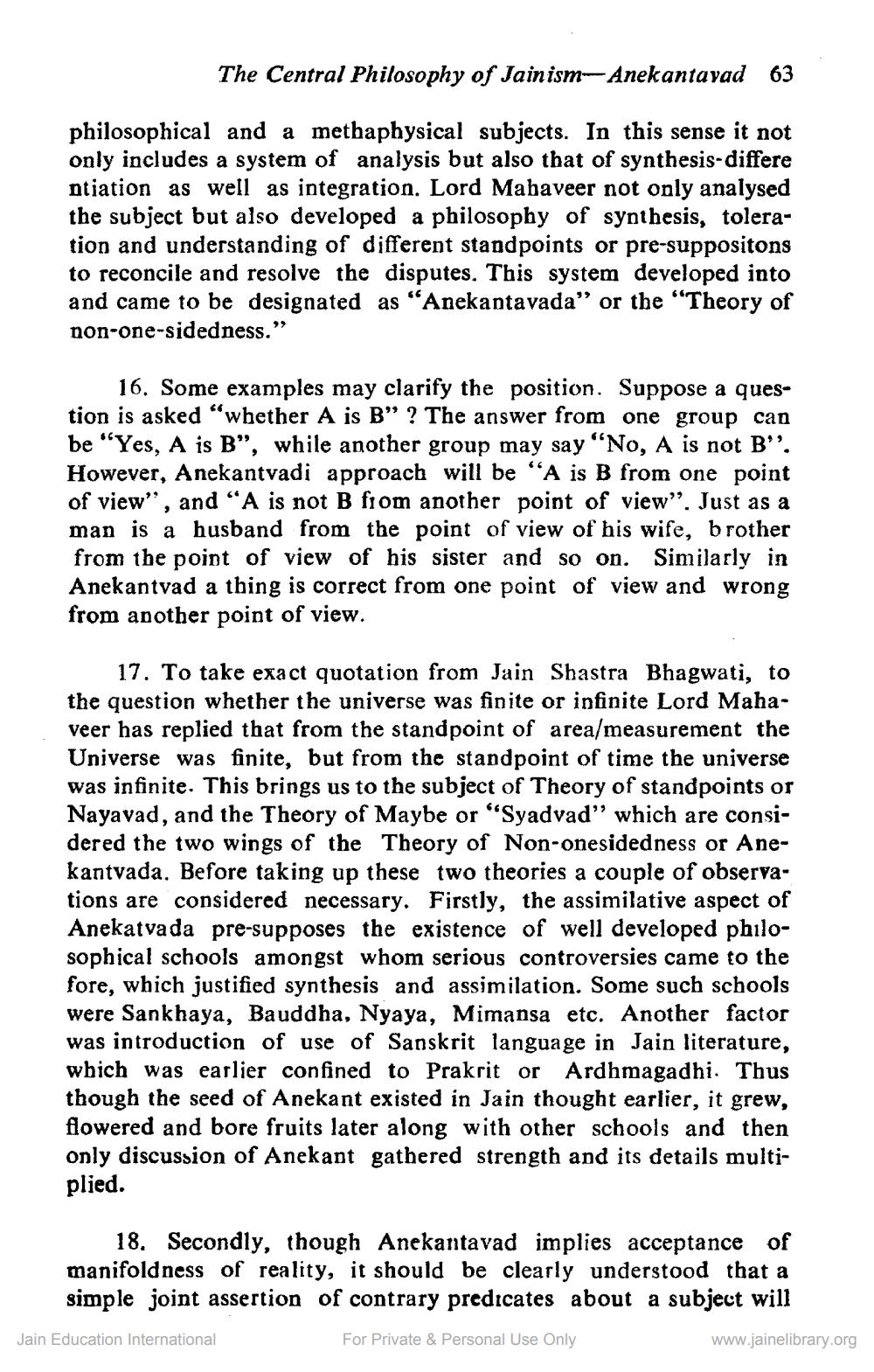________________
The Central Philosophy of Jainism-Anekantavad 63
philosophical and a methaphysical subjects. In this sense it not only includes a system of analysis but also that of synthesis-differe ntiation as well as integration. Lord Mahaveer not only analysed the subject but also developed a philosophy of synthesis, toleration and understanding of different standpoints or pre-suppositons to reconcile and resolve the disputes. This system developed into and came to be designated as "Anekantavada" or the "Theory of non-one-sidedness."
16. Some examples may clarify the position. Suppose a question is asked "whether A is B" ? The answer from one group can be "Yes, A is B", while another group may say "No, A is not B". However, Anekantvadi approach will be "A is B from one point of view", and "A is not B from another point of view". Just as a man is a husband from the point of view of his wife, brother from the point of view of his sister and so on. Similarly in Anekantvad a thing is correct from one point of view and wrong from another point of view.
17. To take exact quotation from Jain Shastra Bhagwati, to the question whether the universe was finite or infinite Lord Mahaveer has replied that from the standpoint of area/measurement the Universe was finite, but from the standpoint of time the universe was infinite. This brings us to the subject of Theory of standpoints or Nayavad, and the Theory of Maybe or "Syadvad" which are considered the two wings of the Theory of Non-onesidedness or Anekantvada. Before taking up these two theories a couple of observations are considered necessary. Firstly, the assimilative aspect of Anekatvada pre-supposes the existence of well developed philosophical schools amongst whom serious controversies came to the fore, which justified synthesis and assimilation. Some such schools were Sankhaya, Bauddha, Nyaya, Mimansa etc. Another factor was introduction of use of Sanskrit language in Jain literature, which was earlier confined to Prakrit or Ardhmagadhi. Thus though the seed of Anekant existed in Jain thought earlier, it grew, flowered and bore fruits later along with other schools and then only discussion of Anekant gathered strength and its details multiplied.
18. Secondly, though Anekantavad implies acceptance of manifoldness of reality, it should be clearly understood that a simple joint assertion of contrary predicates about a subject will For Private & Personal Use Only
Jain Education International
www.jainelibrary.org




